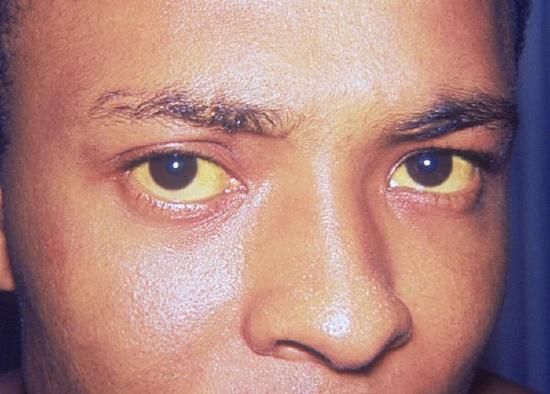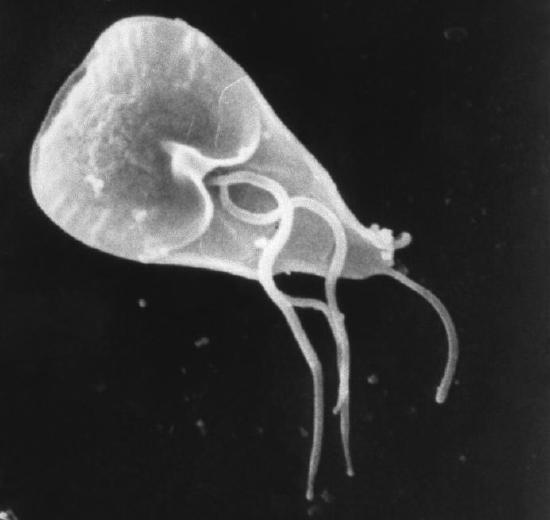The majority of foodborne illnesses are caused by harmful bacteria and viruses, although some parasites also cause foodborne illnesses. In the past, bacterial infections were thought to be more prevalent because few places had the capability to test for norovirus and no active surveillance was being done for this particular agent. Toxins from bacterial infections are delayed because the bacteria need time to multiply. As a result, symptoms associated with intoxication are usually not seen until 12–72 hours or more after eating contaminated food. However, in some cases, such as Staphylococcal food poisoning, the onset of illness can be as soon as 30 minutes after ingesting contaminated food.
Bacteria
Bacteria are tiny organisms that can cause infections of the Gastrointestinal (GI) tract. Not all bacteria are harmful to humans. Some harmful bacteria may already be present in foods when they are purchased. Raw foods including meat, poultry, fish and shellfish, eggs, unpasteurized milk and dairy products, and fresh produce often contain bacteria that cause foodborne illnesses. Bacteria can contaminate food—making it harmful to eat—at any time during growth, harvesting or slaughter, processing, storage, and shipping.
Foods may also be contaminated with bacteria during food preparation in a restaurant or home kitchen. If food preparers do not thoroughly wash their hands, kitchen utensils, cutting boards, and other kitchen surfaces that come into contact with raw foods, cross-contamination—the spread of bacteria from contaminated food to uncontaminated food—may occur. If hot food is not kept hot enough or cold food is not kept cold enough, bacteria may multiply. Bacteria multiply quickly when the temperature of food is between 40 and 140 degrees. Cold food should be kept below 40 degrees and hot food should be kept above 140 degrees. Bacteria multiply more slowly when food is refrigerated, and freezing food can further slow or even stop the spread of bacteria. However, bacteria in refrigerated or frozen foods become active again when food is brought to room temperature. Thoroughly cooking food kills bacteria.
Many types of bacteria cause foodborne illnesses. Examples include
- Salmonella, a bacterium found in many foods, including raw and undercooked meat, poultry, dairy products, and seafood. Salmonella may also be present on egg shells and inside eggs.
- Campylobacter jejuni (C. jejuni), found in raw or undercooked chicken and unpasteurized milk.
- Shigella, a bacterium spread from person to person. These bacteria are present in the stools of people who are infected. If people who are infected do not wash their hands thoroughly after using the bathroom, they can contaminate food that they handle or prepare. Water contaminated with infected stools can also contaminate produce in the field.
- Escherichia coli (E. coli), which includes several different strains, only a few of which cause illness in humans. E. coli O157:H7 is the strain that causes the most severe illness. Common sources of E. coli include raw or undercooked hamburger, unpasteurized fruit juices and milk, and fresh produce.
- Listeria monocytogenes (L. monocytogenes), which has been found in raw and undercooked meats, unpasteurized milk, soft cheeses, and ready-to-eat deli meats and hot dogs.
- Vibrio, a bacterium that may contaminate fish or shellfish.
- Clostridium botulinum (C. botulinum), a bacterium that may contaminate improperly canned foods and smoked and salted fish.
Viruses
Viruses are tiny capsules, much smaller than bacteria, that contain genetic material. Viruses also cause infections to the GI tract that can lead to sickness. People can pass viruses to each other. Viruses are present in the stool or vomit of people who are infected. People who are infected with a virus may contaminate food and drinks, especially if they do not wash their hands thoroughly after using the bathroom.
Common sources of foodborne viruses include
- food prepared by a person infected with a virus
- shellfish from contaminated water
- produce irrigated with contaminated water
Common foodborne viruses include the norovirus, which causes inflammation of the stomach and intestines and hepatitis A, which causes inflammation of the liver
HEPATITIS A
Hepatitis A is an infectious disease of the liver caused by the hepatitis A virus (HAV). It is usually spread by eating food or drinking water contaminated with infected feces. Shellfish which have not been sufficiently cooked are a relatively common source and it may also be spread through close contact with an infectious person. While children often do not have symptoms when infected, they are still able to infect others. Symptoms usually last less than 2 months, although some people can be ill for as long as 6 months: fatigue, fever, nausea, appetite loss, jaundice, a yellowing of the skin or the whites of the eyes, and diarrhea.

The viral disease Hepatitis A is manifested here as jaundice of the conjunctivae and facial skin. HAV is usually spread from person to person by putting something in the mouth (even though it may look clean) that has been contaminated with the stool of a person with hepatitis A. Adults will have signs and symptoms more often than children. Image used with permission ( CDC/Dr. Thomas F. Sellers/Emory University)
Parasites
Parasites are tiny organisms that live inside another organism and can also infect the GI tract. In developed countries such as the United States, parasitic infections are relatively rare. Cryptosporidium parvum and Giardia intestinalis are parasites that are spread through water contaminated with the stools of people or animals who are infected. Foods that come into contact with contaminated water during growth or preparation can become contaminated with these parasites. Food preparers who are infected with these parasites can also contaminate foods if they do not thoroughly wash their hands after using the bathroom and before handling food. Trichinella spiralis is a type of roundworm parasite. People may be infected with this parasite by consuming raw or undercooked pork or wild game.
GIARDIASIS
Giardiasis (also known as “beaver fever”) is a parasitic disease caused by Giardia lamblia. Once an animal or person has been infected with this protozoan, the parasite lives in the intestine, and is passed in the stool. Because the parasite is protected by an outer shell, it can survive outside the body, and in the environment for long periods of time. Cysts are resistant forms and are responsible for transmission of giardiasis. Both cysts and trophozoites can be found in the feces (diagnostic stages). The cysts are hardy and can survive several months in cold water. Infection occurs by the ingestion of cysts in contaminated water, food, or by the fecal-oral route (hands or fomites).

This scanning electron micrograph (SEM) revealed some of the external ultrastructural details displayed by a flagellated Giardia lamblia protozoan parasite. G. lamblia is the organism responsible for causing the diarrheal disease “giardiasis”. Image used with permission (Public Domain; CDC / Janice Haney)
Contributors
- National Institute of Diabetes and Digestive and Kidney Diseases (NIDDK)
- Wikipedia
Candela Citations
- Common Food-Borne Pathogens. Authored by: Medical LibreTexts Contributors. Provided by: LibreTexts. Located at: https://med.libretexts.org/Courses/Sacramento_City_College/SCC%3A_Nutri_300_(Coppola)/Chapters/11%3A_Food_Safety_Concerns_and_Future_of_our_Food/11.4%3A_Common_Food-Borne_Pathogens. License: CC BY-NC-SA: Attribution-NonCommercial-ShareAlike
